Today hearings were held in Manhattan for the Mayor’s Commission on City Art, Monuments and Markers. It was a real New York occasion, with dashes of radical politics, establishment equivocation, blunt force and moments of pure eccentricity. Anyone who wanted could speak for three minutes in randomly assigned slots. Despite being called for the day before the holiday at 10am, about 100 people attended with a good sprinkling of local media.
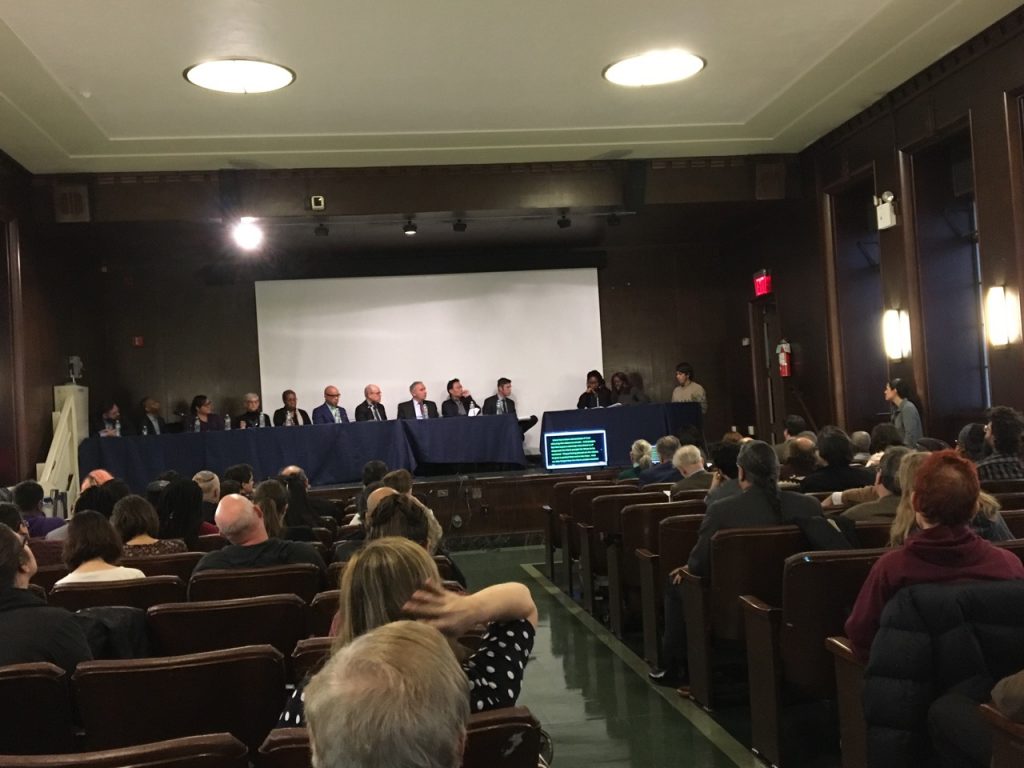
As luck would have it Decolonize This Place organizer Conor Tomàs Reed went first and called on the commission to remove the Columbus monument at Columbus Circle, the Theodore Roosevelt statue at the American Museum of Natural History and the Marion J. Sims memorial at 103rd St. As Reed said
These three monuments serve as a daily reminder of colonialism, indigenous genocide, and white supremacist eugenics. That they are familiar landmarks in this city shows just how much we have inured ourselves to the horrors that they celebrate.
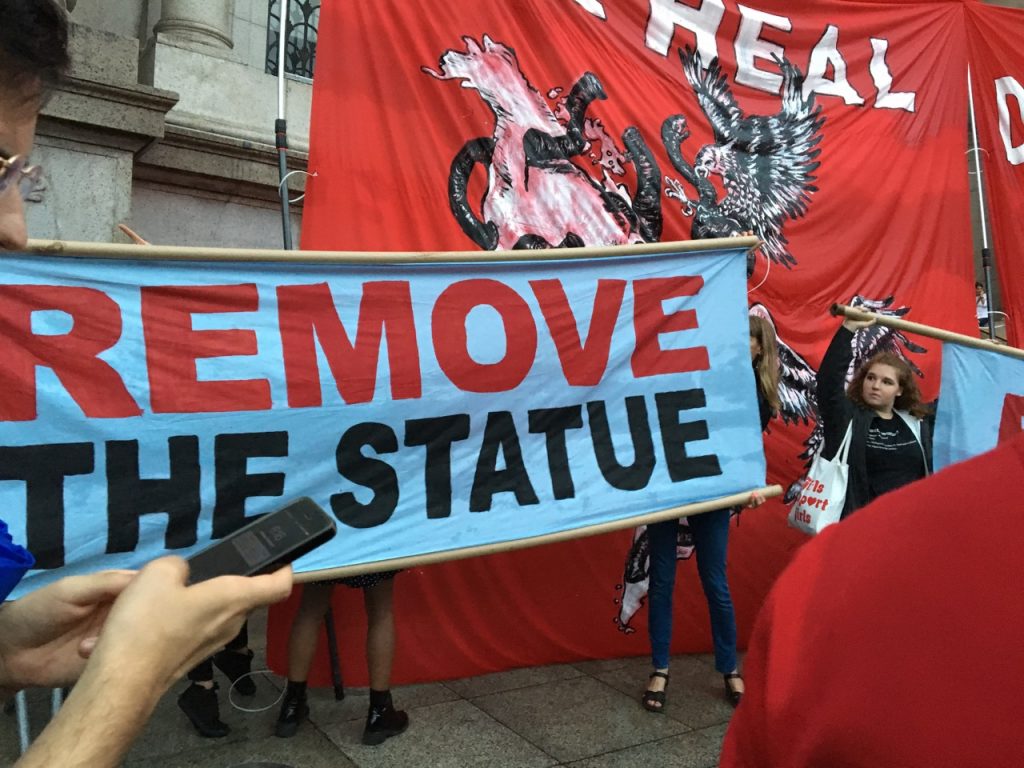
This bracing challenge was soon countered by a succession of “proud Italian Americans” declaring undying love for Columbus and that any attempt to remove the monument was an outrage. One speaker from the Knights of Columbus claimed opponents were like the KKK because the Klan were (he claimed) against Columbus in the 1930s. These statements were undercut by a young Italian-American activist from SURJ who pointed out that Columbus lived about 350 years before Italy was a nation; spoke only Catalan; and served the Spanish monarchy. But no politician could have missed the vehemence and belligerence of the opposition to any change whatever, even adding a sign.
If most of the discussion was about Columbus, in nearly four hours of testimony, very few Indigenous voices were heard. One exception was Robert Borrero of the International Indian Treaty Council, who spoke with dignified restraint about Columbus’s brutality to his own Taino people.
Several African Americans testified to the scandal of Marion J. Sims, who did medical experiments on African American women without anesthetic, having a memorial. One flamboyant Jewish lady got the only laugh of the day when she concluded emotional testimony saying
Keep all the monument–except that Sims, I never heard about that, he’s awful
So if I had to bet, I’d guess Sims will be the token withdrawal. The co-commissioner Tom Finkelpearl, NYC’s cultural director, opened with a slightly lame PowerPoint suggesting alternatives to removal, like adding signs; commissioning art projects; or augmented reality apps. This seemed to be a clear signal of the Commission’s thinking, although radical academics like Audra Simpson and Jack Tchen are members and might be able to push for a little more. Perhaps the markers to Marshall Philippe Pétain and Pierre Laval, who directed the genocidal Vichy regime in Second World War France, might be quietly uprooted.
There are two more opportunities to intervene:
- Monday, Nov. 27 at 10 a.m. — Bronx Borough Hall, Rotunda, 851 Grand Concourse, the Bronx
- Tuesday, Nov. 28 at 10 a.m. — Staten Island Borough Hall, Room 125, 10 Richmond Terrace, Staten Island
Even so nothing will happen fast this being New York. The report will come out in December. The Mayor will then decide which of their recommendations to adopt. And then it all goes back to the beginning with the community boards and a multi-step process back to the usual parks and culture review board. So here we are, giving reform a chance. Expect to hear about a return to revolutionary tactics soon!
Roosevelt Must Fall
As for me, I spoke about the Theodore Roosevelt Equestrian Monument at the American Museum of Natural History. For the record, this is what I said:
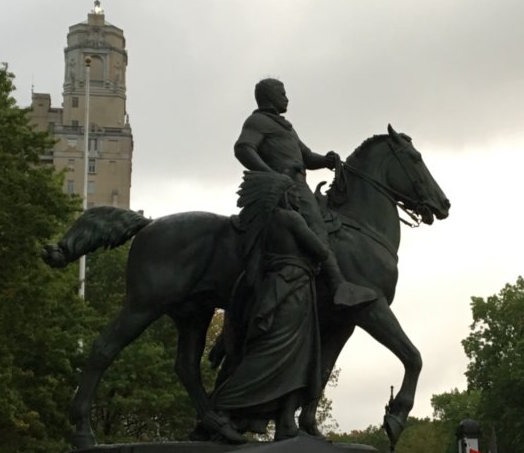
“I would like to suggest to you that the Equestrian Monument that is part of the Theodore Roosevelt Memorial at the American Museum of Natural History should be removed because it visualizes systems of racialized hierarchy, which, while discredited, continue to do harm in the present. Additional signs or information cannot replace the visceral impact of visual materials, as advertisers and artists alike know very well. Certainly, that removal would need to be the start of an extensive repurposing of the Museum, which is long overdue. But given that the Natural History Museum is the most visited in New York, with over 6.5 million visitors, it cannot be right to leave a symbol of racial hierarchy in place.
Roosevelt died in 1919 and the New York memorial was at once proposed by Henry Fairfield Osborn, director of the American Museum of Natural History. That same year, the Museum Journal claimed to demonstrate a “relationship between [skin] color and achievement.” Osborn was a believer in Nordic supremacy, a theory which also entailed the decline of white dominance unless immigration was controlled. These theories unfortunately continue to have purchase today. In 1921, the AMNH hosted the International Congress of Eugenics under Osborn’s organization. It opened a Hall of Public Health to promote eugenics (the attempt to breed out “impurities” from humans, also involving forced sterilization) and the effort to control immigration that resulted in the 1924 Immigration Act.
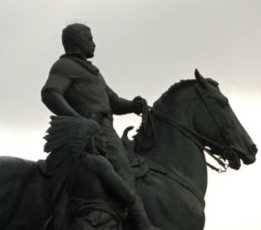
The Equestrian monument was sculpted by James Earle Fraser, who had earlier made a piece called The End of the Trail, illustrating the eugenicist belief in the period that Indians would “die out.” The monument visualizes belief in racial superiority through the now discredited so-called science of craniometry—measuring skulls. The idea was that the perfect skull had a vertical forehead, which is hard to find in an actual human being, so the example given was usually a Greek statue. In the US this idea was widely disseminated in Josiah Nott’s 1857 Indigenous Races of the Earth. This work claimed that there are several distinct human races, visible in their different skull shapes more than superficial details like skin color. In this framework, a statue is not a depiction of a racist idea, it is a racist idea.
If you examine the Equestrian Monument, you can see that Roosevelt’s skull is close to vertical, while the African figure has a noticeably sloped forehead and the Indian has the most sloped of all. In short, the Monument visibly incarnates Osborne’s system of racial hierarchy, as the Trustees acknowledged at the dedication ceremony in 1936 (the sculpture was completed in 1939). Of course, Roosevelt’s towering position over the half-dressed African and Indian reinforces that meaning, derived as it was from Roman Imperial sculpture.
It’s true that most people have now forgotten the specifics of craniometry. But the racist term “slopehead” indicates that the false claim of cranial angle still influences present-day racist caricature, usually applied to people of Asian descent—it’s in the cult film Pulp Fiction for example, a Harvey Weinstein production, I might add.
So it’s not a question that people at that time had bad ideas and we censor the monument for that but that it actively visualizes and perpetuaties racial stereotypes today.
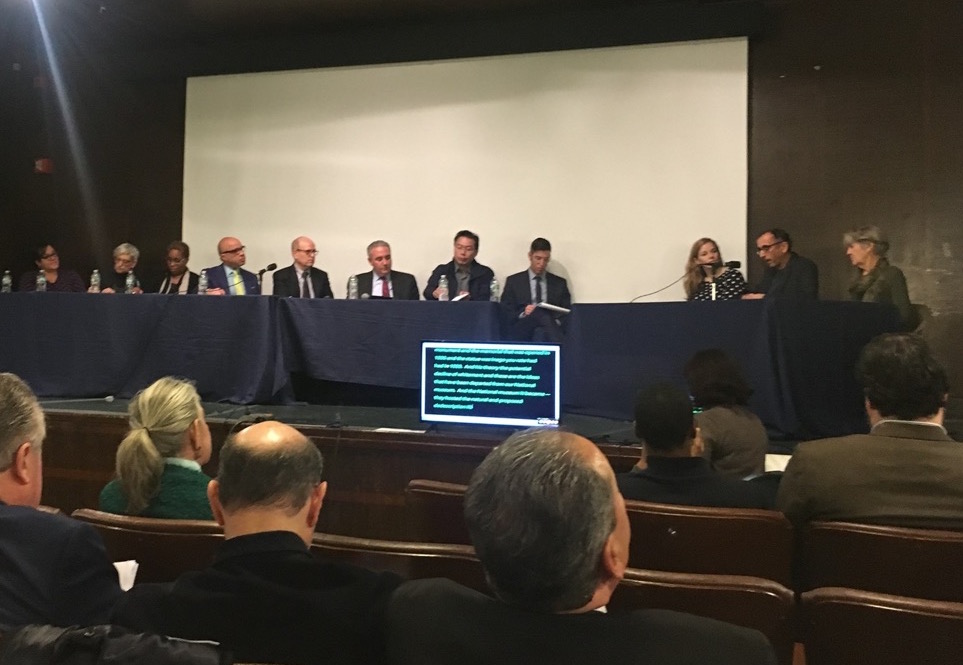
Sources
Anon, “The New York Theodore Roosevelt Memorial.” Science 83, no. 2143 (1936): 75-76.
David Bindman, Ape to Apollo : aesthetics and the idea of race in the 18th century (London: Reaktion, 2002)
Michael Barker, “The Life and Controversies of Henry Fairfield Osborn,” http://www.swans.com/library/art18/barker99.html
Stephen Jay Gould, The Mismeasure of Man (New York: Norton 1996)
Havig, Alan. “Presidential Images, History, and Homage: Memorializing Theodore Roosevelt, 1919-1967.” American Quarterly 30, no. 4 (1978): 514-32. doi:10.2307/2712298.
Nicholas Mirzoeff, Bodyscape: Art, Modernity and the Ideal Figure (London and New York: Routledge, 1995).
George N. Pindar, “The New York State Roosevelt Memorial,” The Scientific Monthly Vol. 42, No. 3 (Mar., 1936), pp. 280-284
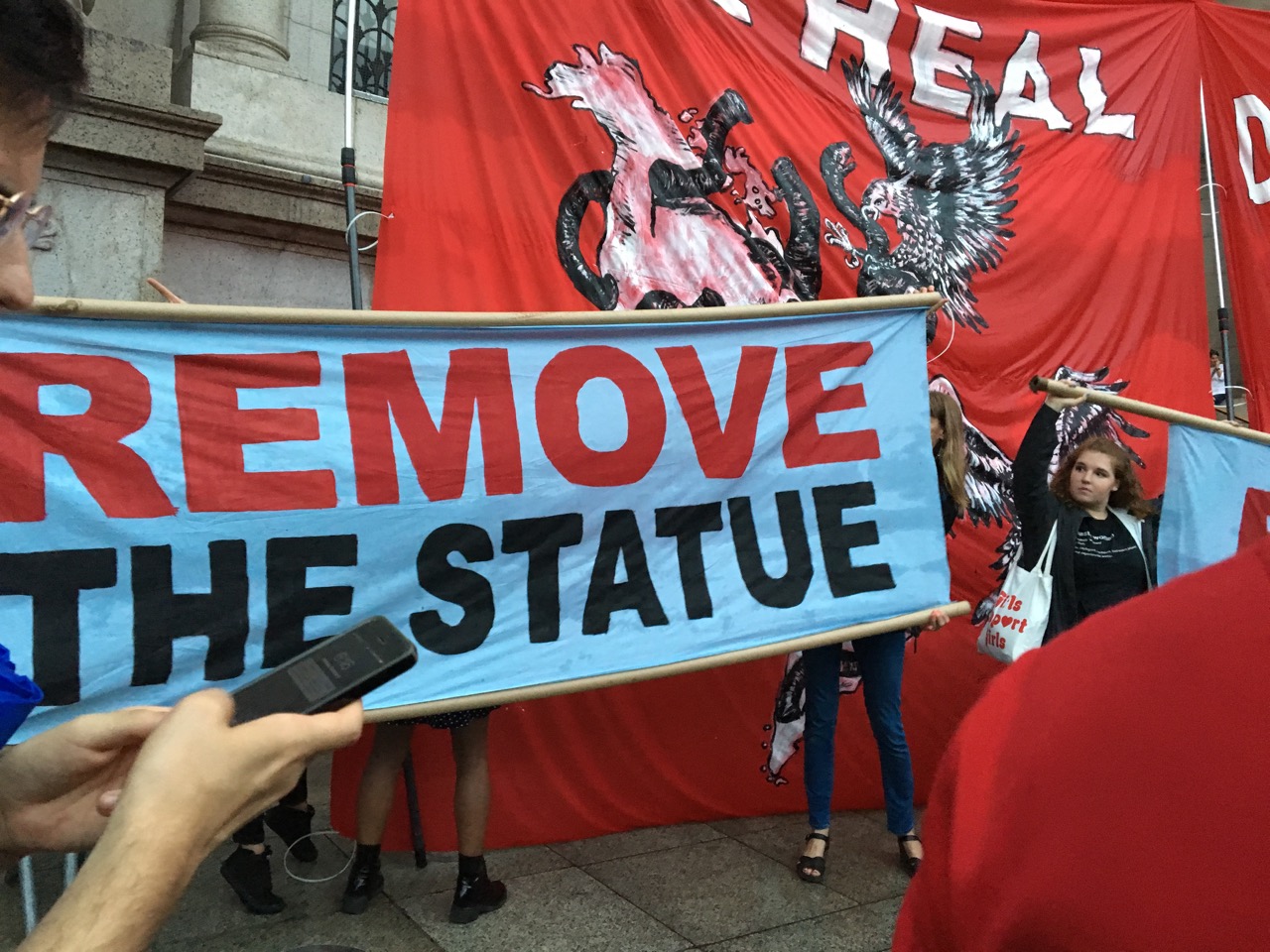
One reply on “Monumental Questions”
Thanks so much for this coverage! You and Conor Tomas Reed are so right: the Roosevelt statue at the museum must go. Last week I co-convened a conference in Johannesburg on the topic of controversial public art. We had delegates from around the world, and when one presenter spoke about the Roosevelt statue and showed its image, all the non U.S. folks (and some of the U.S. folks) literally gasped at its racism. Its revolting, and shames us all until it is removed.